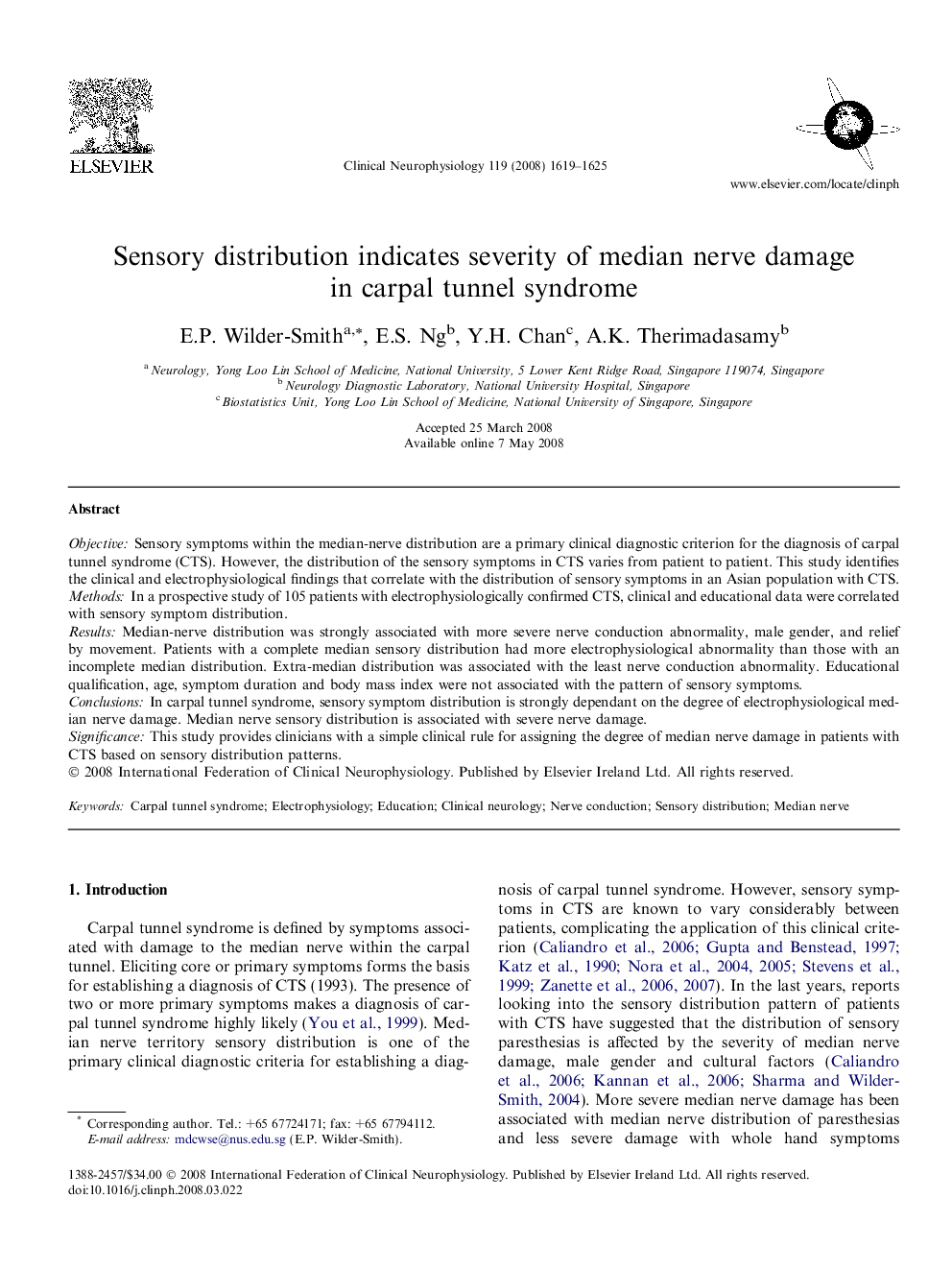| Article ID | Journal | Published Year | Pages | File Type |
|---|---|---|---|---|
| 3047318 | Clinical Neurophysiology | 2008 | 7 Pages |
ObjectiveSensory symptoms within the median nerve distribution are a primary clinical diagnostic criterion for the diagnosis of carpal tunnel syndrome (CTS). However, the distribution of the sensory symptoms in CTS varies from patient to patient. This study identifies the clinical and electrophysiological findings that correlate with the distribution of sensory symptoms in an Asian population with CTS.MethodsIn a prospective study of 105 patients with electrophysiologically confirmed CTS, clinical and educational data were correlated with sensory symptom distribution.ResultsMedian nerve distribution was strongly associated with more severe nerve conduction abnormality, male gender, and relief by movement. Patients with a complete median sensory distribution had more electrophysiological abnormality than those with an incomplete median distribution. Extra-median distribution was associated with the least nerve conduction abnormality. Educational qualification, age, symptom duration and body mass index were not associated with the pattern of sensory symptoms.ConclusionsIn carpal tunnel syndrome, sensory symptom distribution is strongly dependant on the degree of electrophysiological median nerve damage. Median nerve sensory distribution is associated with severe nerve damage.SignificanceThis study provides clinicians with a simple clinical rule for assigning the degree of median nerve damage in patients with CTS based on sensory distribution patterns.
